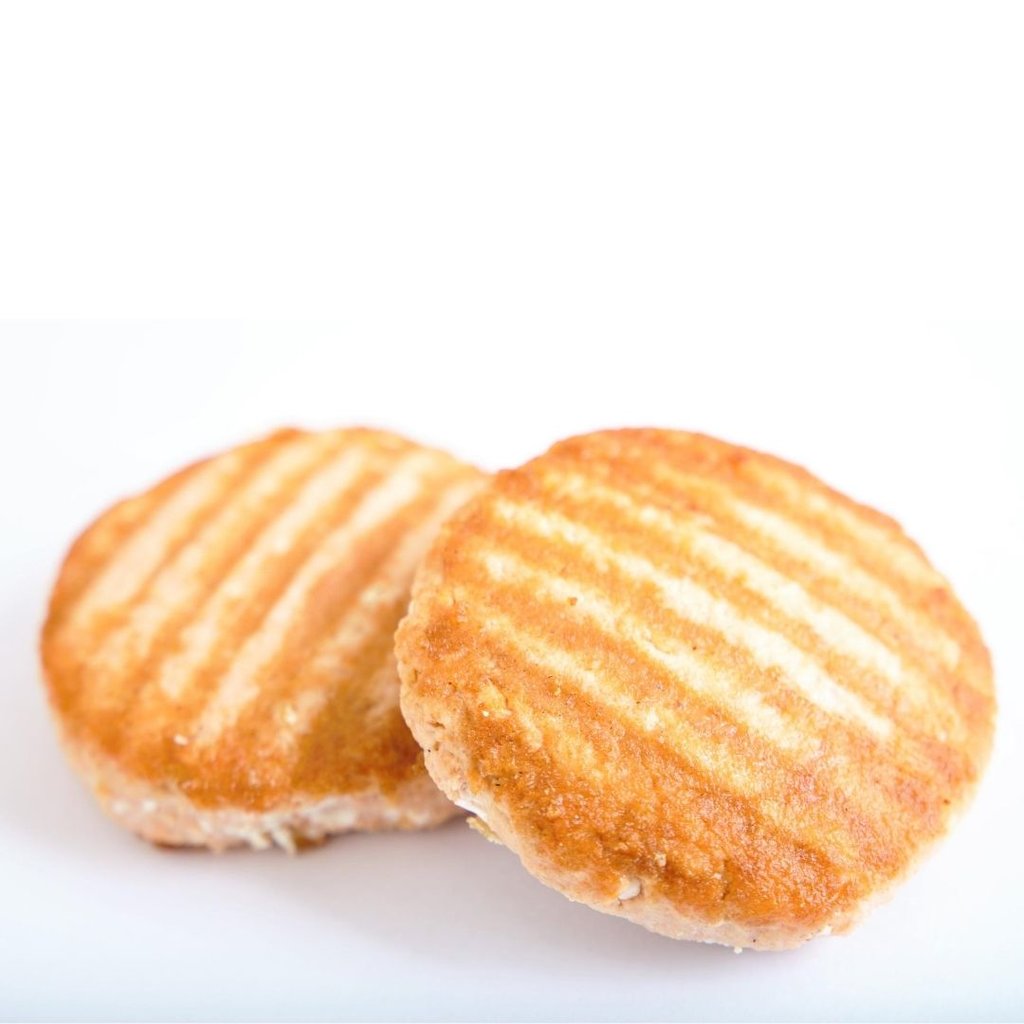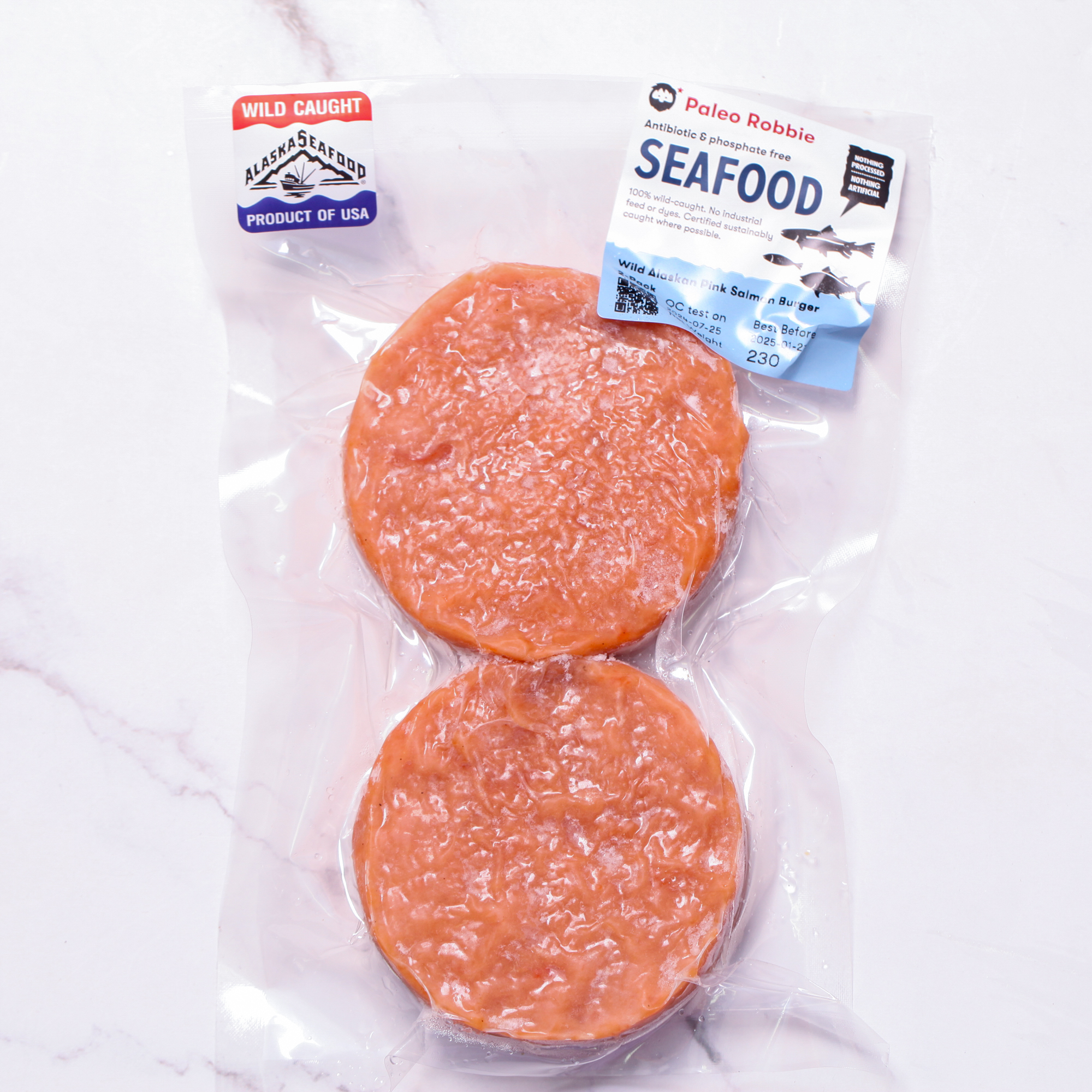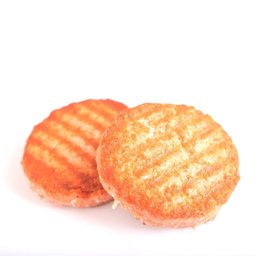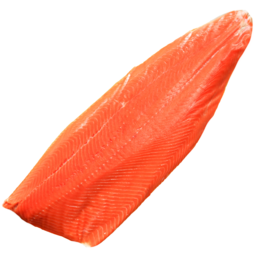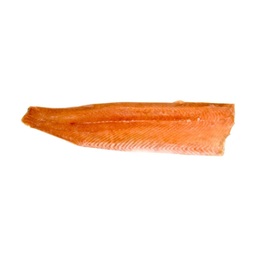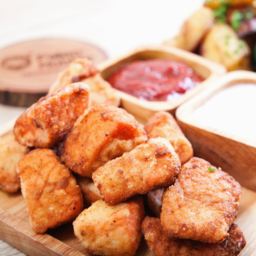Wild Alaskan Pink Salmon Burger 2-Pack
฿105 per 2-Pack
Description Be prepared to be amazed by this Wild Alaskan Pink Salmon Burger 2-Pack! You're guaranteed a winner for your next BBQ. Ingredients: Wild Alaskan pink salmon. The burgers are plain so are best enjoyed by adding rich seasoning. Be generous with traditional seasonings & herbs, some light mayo, and this will definitely satisfy any fish lover's taste buds. Not sashimi-grade, so please don't eat this raw. Description The pink salmon (also known as the humpback salmon) is an iconic species of the north Pacific Ocean and is one of the most important fishery species throughout its range Although smaller than the sockeye and coho, pink salmon is very nutritious and packs just as much goodness as their larger cousins. Pink salmon has a delicate and light flavor, with a rosy-pink-colored flesh with a texture that is more like trout than salmon. Origin Wild-caught and directly imported from Alaska. Recommendations This is a very versatile cut suitable for further preparation for a variety of dishes. Can be cut into strips and then baked in an oven, poached, pan-fried, or grilled over open flame. Because of their milder flavor, they make an excellent vehicle for sauces. ===For more information, please read below=== Why are all of our fish wild-caught from rivers and oceans? Salmon are carnivores and feed on shrimp and krill as well as little sea creatures called plankton and zooplankton. This is the natural diet of a wild salmon. Salmon and other types of fish that raised in fish-farms are not on a carnivorous diet since it is too costly and therefore not very profitable for the farmers. Fish that are raised in farms are given food pellets made from soybeans and corn that also has antibiotics added to the food to reduce the outbreak of diseases like parasitic sea lice (Click here for the source). In 2011 it was estimated that $436 million worth of farmed salmon in Norway was inedible due to parasitic sea lice breakouts in farmed fisheries (Click here for the source), which is still an ongoing issue in 2019. When we mention our salmon is wild-caught from Alaska, we want our tribe members to know that they need not worry whether there's antibiotics or any other added toxins in our salmon. It's important to note that mercury and polychlorinated biphenyls (PCBs) are found in both farm-raised and wild-caught seafood due to industrial pollution that finds its way into lakes, rivers, and oceans. However, studies show that there are 8x fewer PCBs in wild-caught fish than their farmed siblings (Click here for the source). Large predatory fish that live 10+ years tend to build up more mercury as they age. The life expectancy of wild salmon is anywhere from 2-8 years and as they feed on small fish, their mercury levels are much lower. We have tested our wild-salmon for mercury and we are happy to say our wild-sockeye salmon contain less than 0.000041g/kg. Sockeye salmon is one of the lowest mercury fish available. We have also listed a neat chart that lists which fish have a lower mercury rate compared to others. Finally, wild-caught salmon tastes much better and has a better texture than farmed.
| Calories | 131 |
| Total Fat | 5 g |
| Total Protein | 22 g |
| Total Carbohydrates | 0 g |
| Total Fiber | 0 g |

